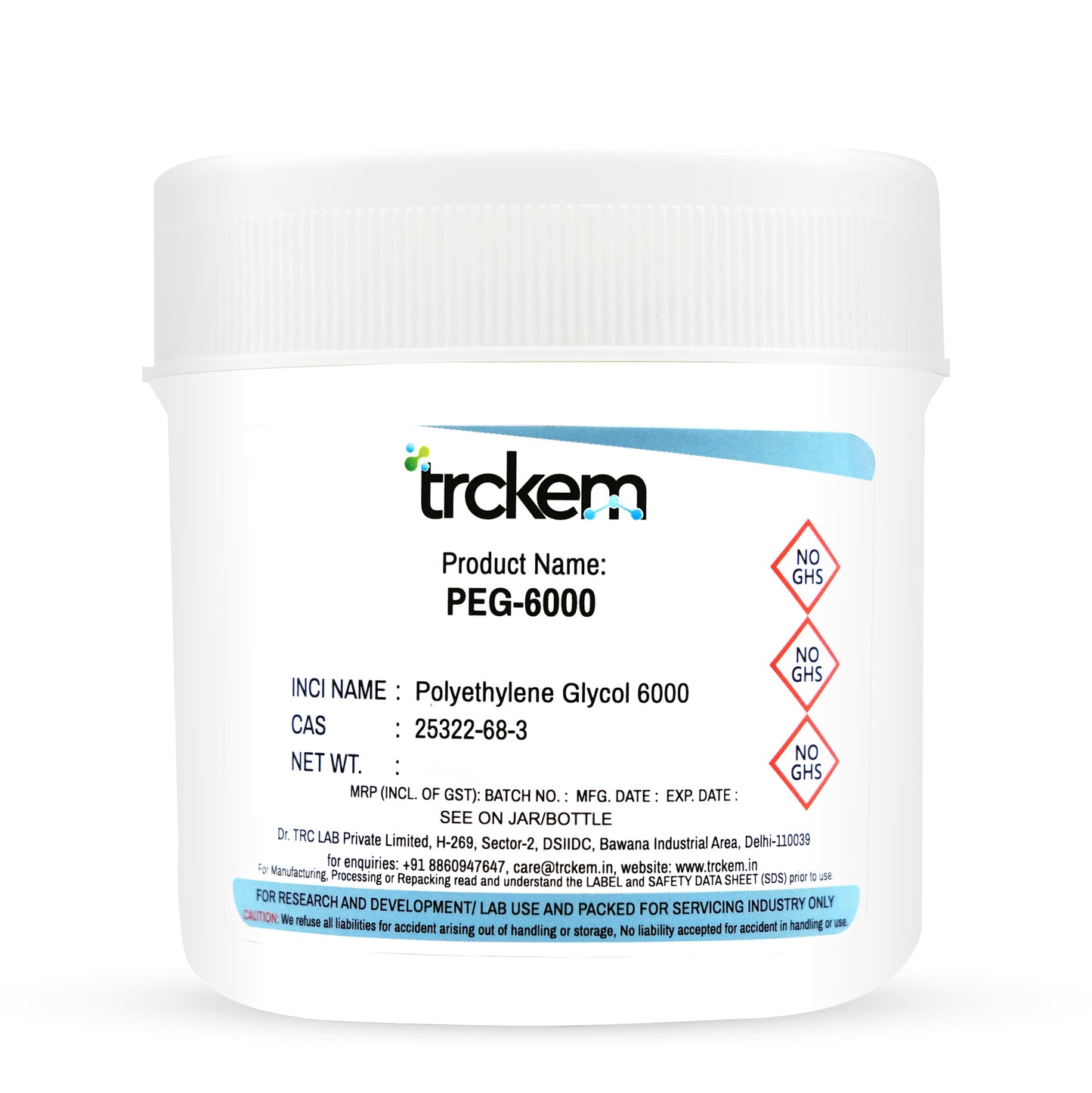
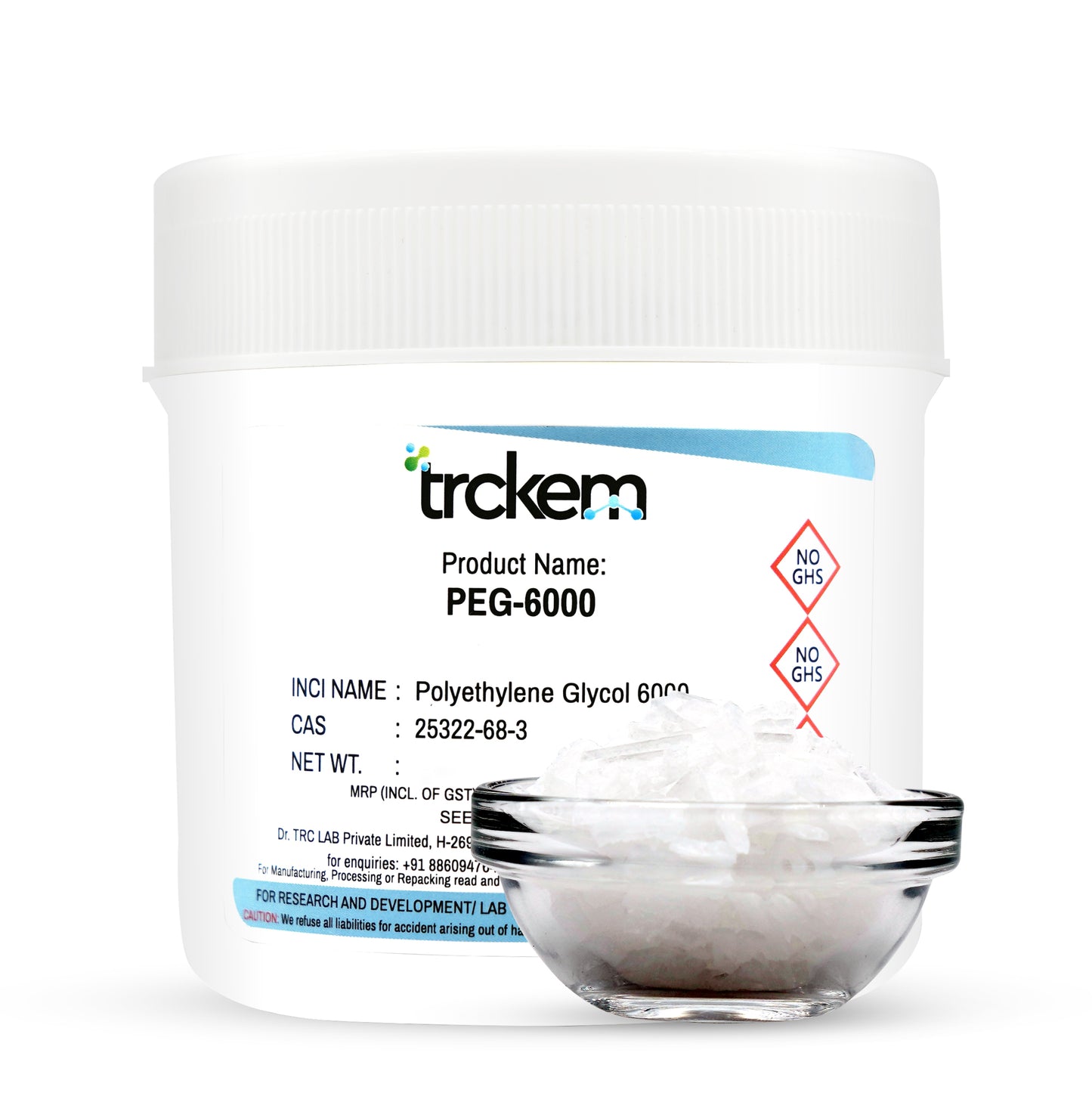
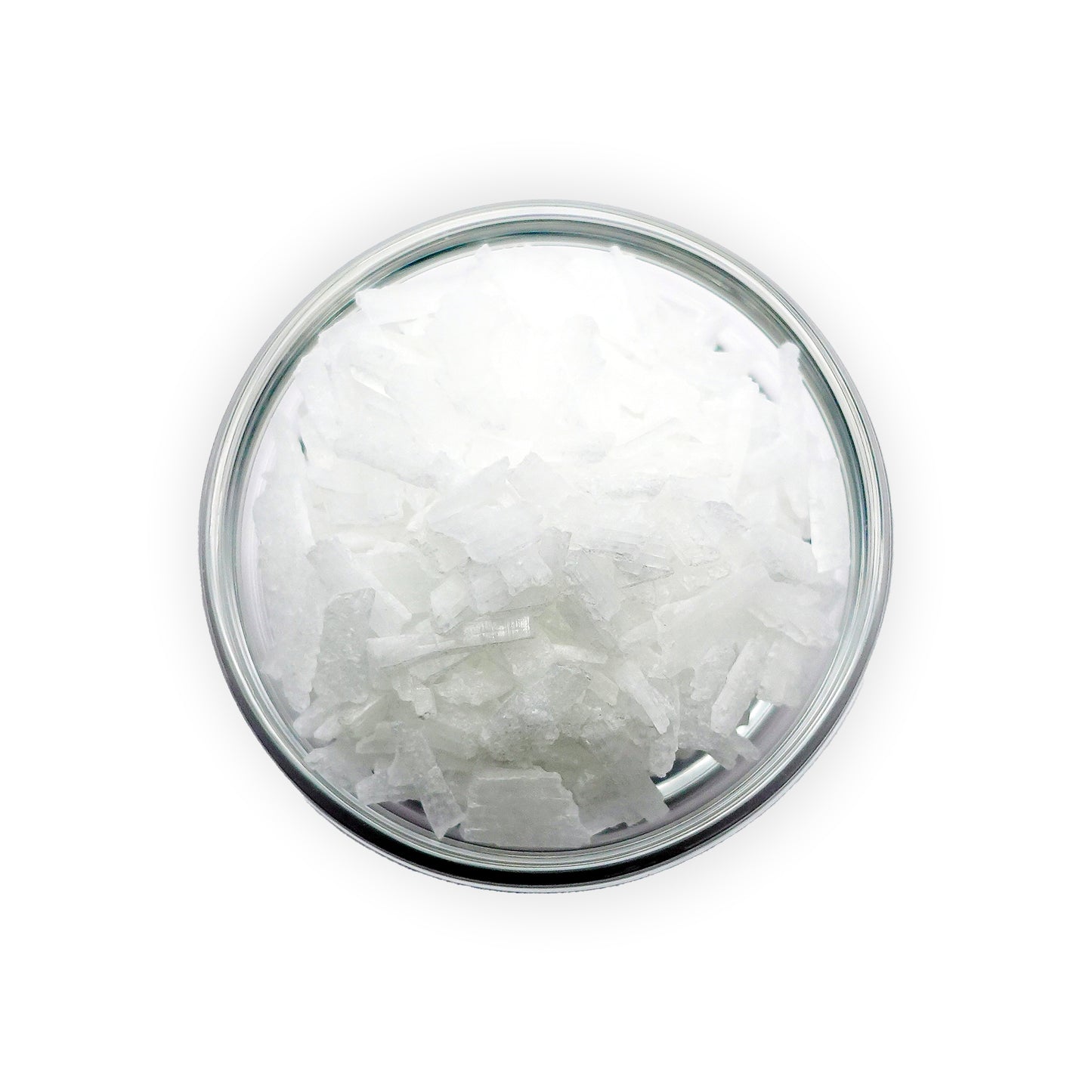
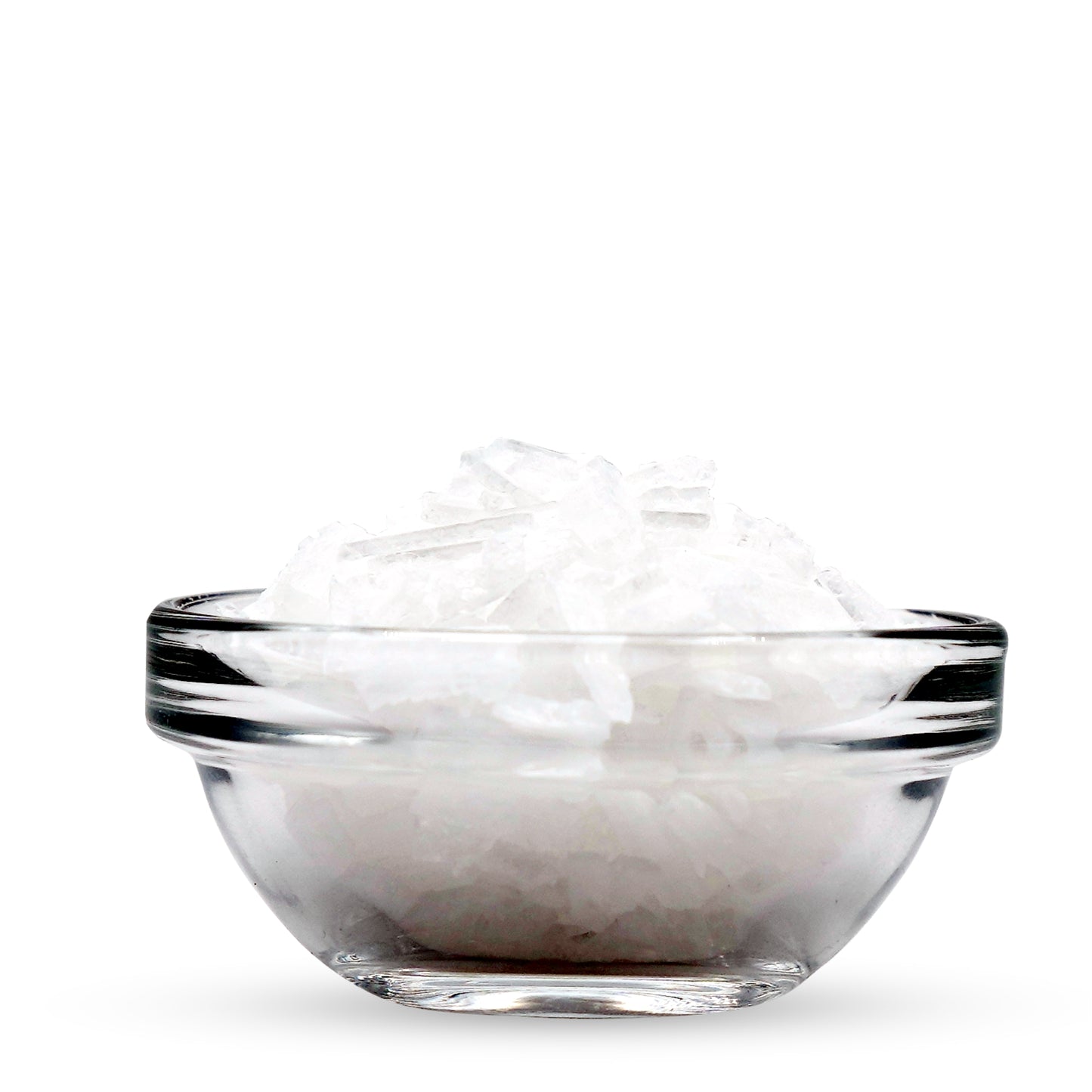
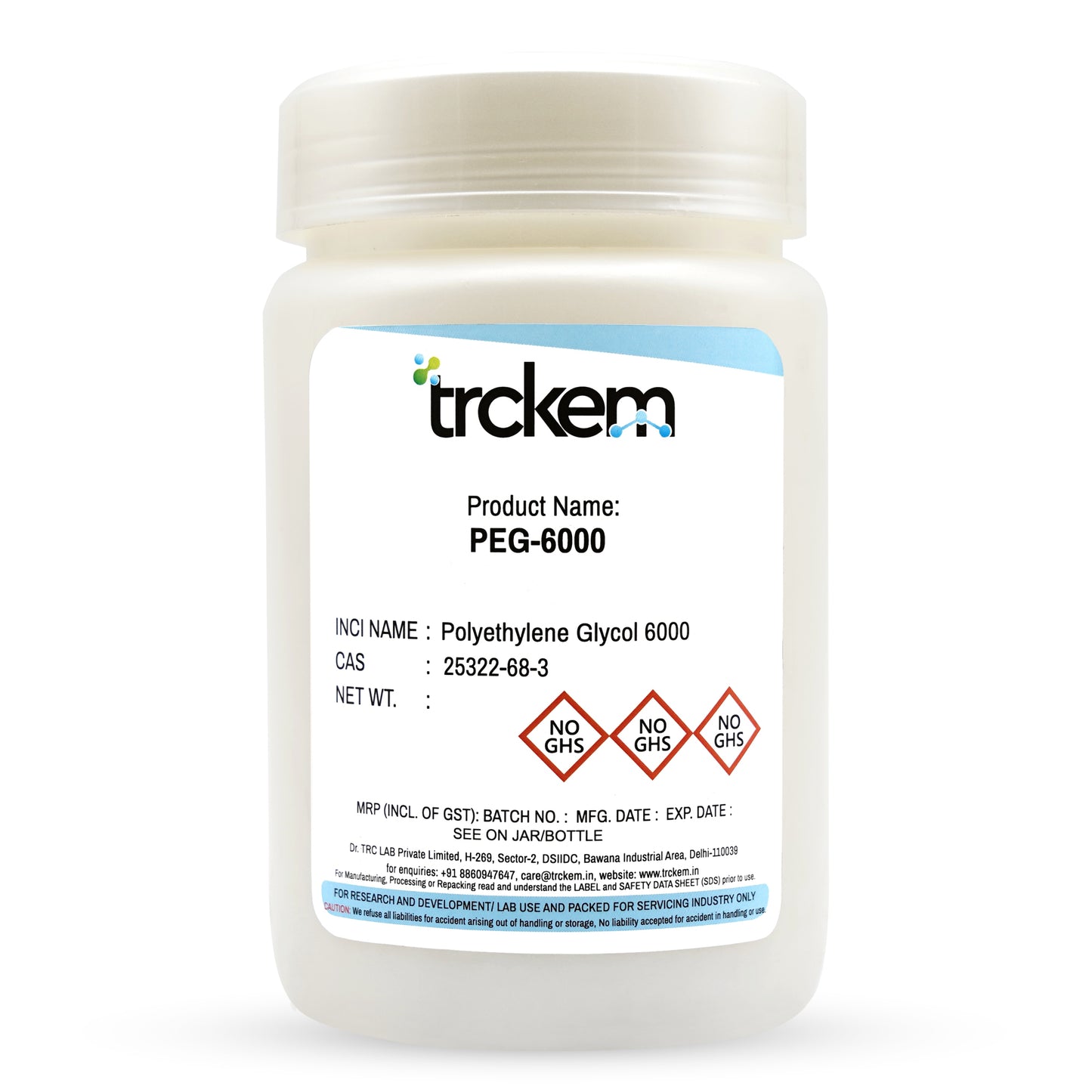
FAQ (Frequently Asked Questions)
1. What is PEG-6000?
PEG-6000, or Polyethylene Glycol 6000, is a high molecular weight polymer of ethylene oxide. It is commonly used in personal care products as a thickening agent, emulsifier, and humectant, enhancing the texture, stability, and moisture retention of formulations.
2. What is the CAS Number and INCI Name of PEG-6000?
CAS Number: 25322-68-3
INCI Name: PEG-150
3. What are the benefits of PEG-6000 in personal care products?
PEG-6000 offers several benefits, including:
- Thickening Agent: Enhances the viscosity of formulations, providing a desirable consistency.
- Emulsification: Stabilizes oil-in-water emulsions, ensuring uniformity in products like creams and lotions.
- Humectant Properties: Attracts and retains moisture, contributing to skin hydration.
- Solubilizer: Helps dissolve other ingredients, improving the overall formulation.
4. In which personal care products is PEG-6000 commonly used?
PEG-6000 is utilized in various personal care products, such as:
- Skincare Products: Creams, lotions, and gels.
- Haircare Products: Shampoos and conditioners.
- Oral Care Products: Toothpastes and mouthwashes.
- Deodorants: Antiperspirants and body sprays.
- Cosmetics: Foundations and mascaras.
5. Is PEG-6000 safe for skin application?
Yes, PEG-6000 is generally considered safe for topical application in personal care products. However, individuals with sensitive skin should perform a patch test before widespread use to ensure compatibility.
6. Can PEG-6000 be used in natural and organic formulations?
PEG-6000 is a synthetic polymer and may not align with certain natural or organic certification standards. Formulators should verify compliance with specific certification requirements when considering its inclusion.
7. What is the recommended concentration of PEG-6000 in personal care formulations?
The concentration of PEG-6000 varies depending on the product type and desired effect but typically ranges from 1% to 10%. Formulators should consult specific formulation guidelines for optimal performance.
8. Is PEG-6000 suitable for sensitive skin?
PEG-6000 is generally suitable for most skin types, including sensitive skin. However, individuals with known sensitivities should conduct a patch test or consult a dermatologist before use.
9. What is the shelf life of PEG-6000?
PEG-6000 typically has a long shelf life when stored properly. Manufacturers should provide specific shelf life information based on storage conditions.
10. How should PEG-6000 be stored?
Store PEG-6000 in a cool, dry place away from direct sunlight and moisture to maintain its stability and efficacy.






